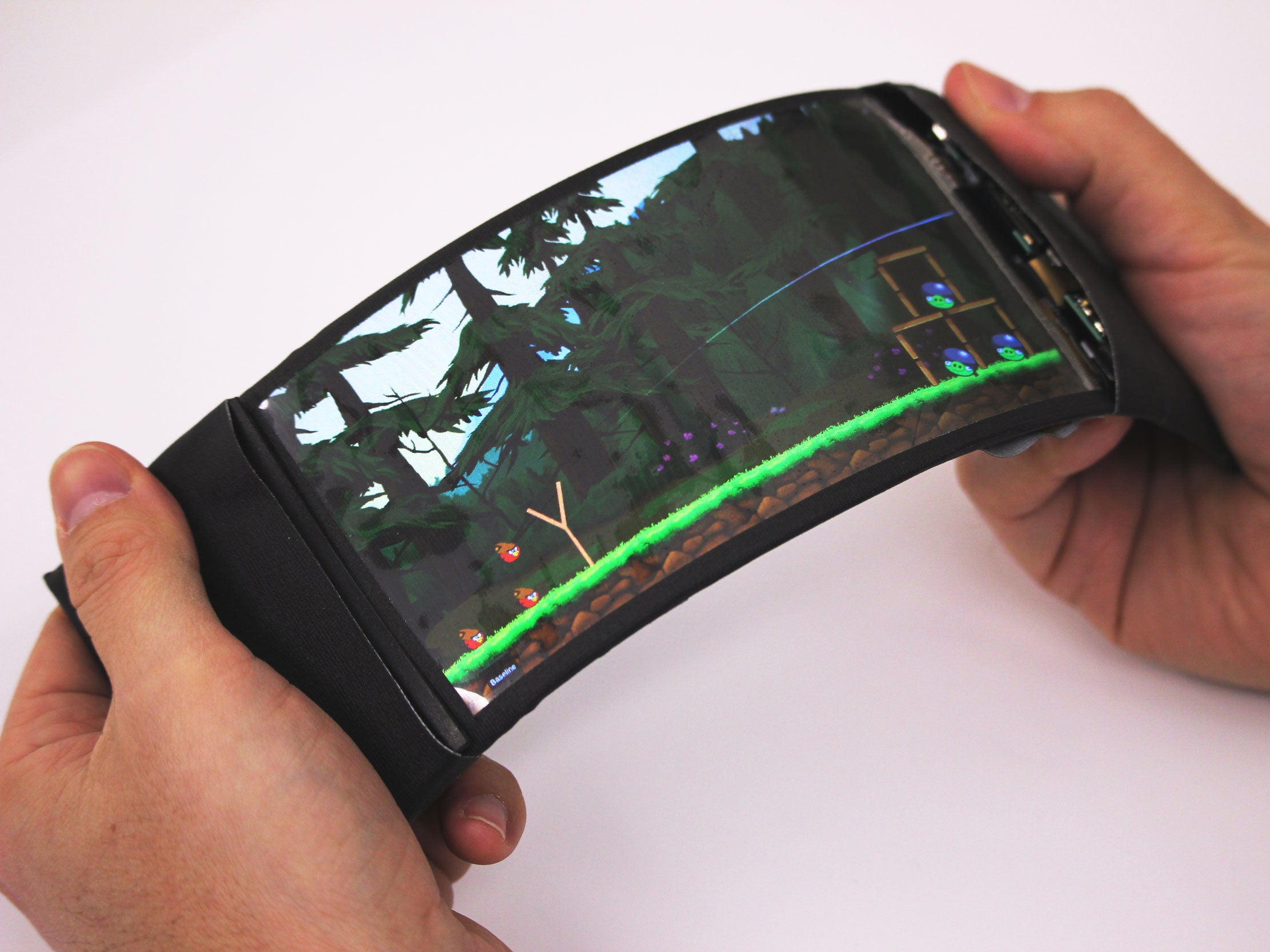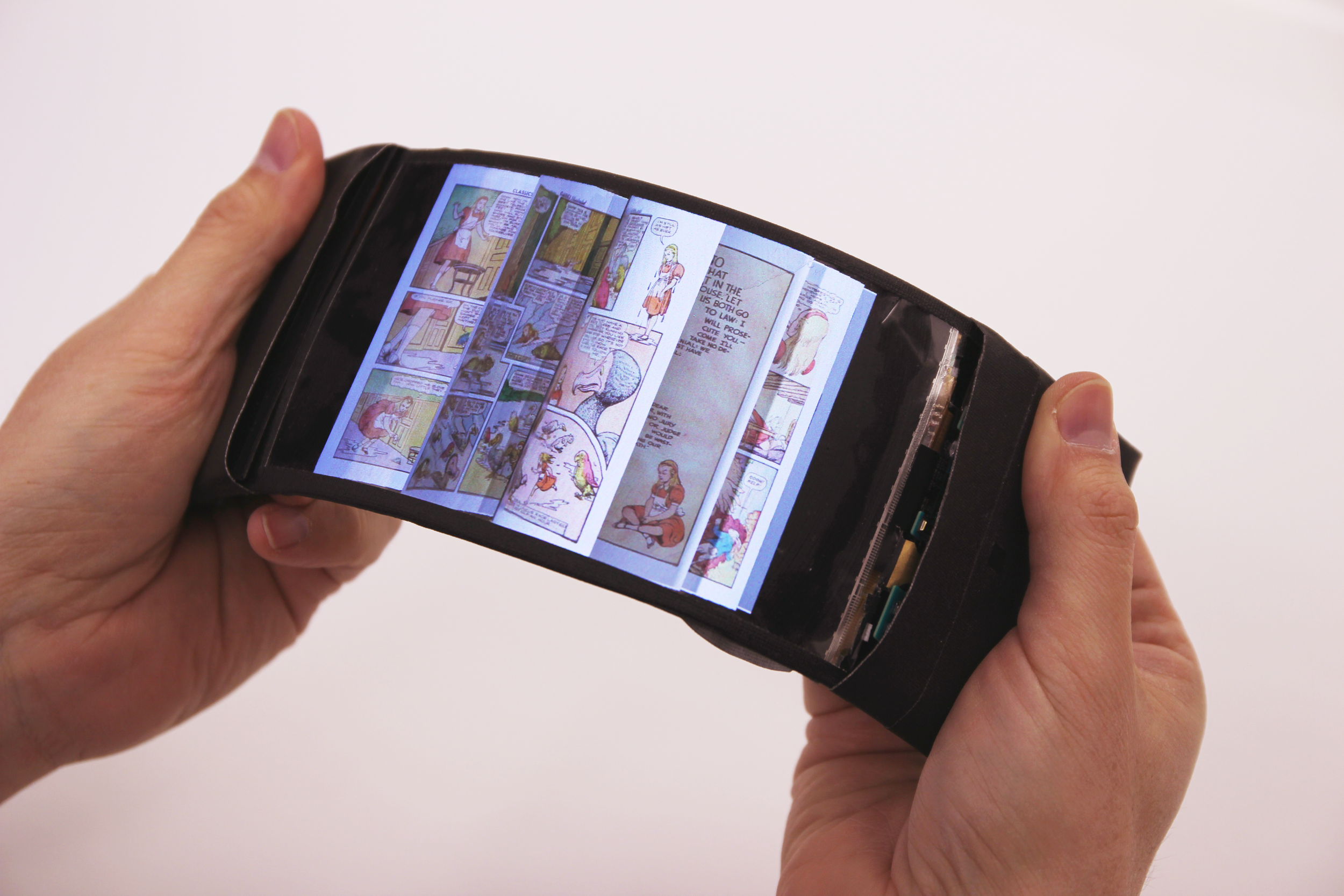'World's first' bendy smartphone unveiled by Canadian researchers
The team behind the phone believe the technology could reach consumers within a few years

Your support helps us to tell the story
From reproductive rights to climate change to Big Tech, The Independent is on the ground when the story is developing. Whether it's investigating the financials of Elon Musk's pro-Trump PAC or producing our latest documentary, 'The A Word', which shines a light on the American women fighting for reproductive rights, we know how important it is to parse out the facts from the messaging.
At such a critical moment in US history, we need reporters on the ground. Your donation allows us to keep sending journalists to speak to both sides of the story.
The Independent is trusted by Americans across the entire political spectrum. And unlike many other quality news outlets, we choose not to lock Americans out of our reporting and analysis with paywalls. We believe quality journalism should be available to everyone, paid for by those who can afford it.
Your support makes all the difference.Canadian researchers have developed what they claim is the world's first flexible smartphone.
The technology, which is still in the prototype stage, could one day make shattered screens and permanently bent phones a thing of the past if it hits the market.
The team, working in the Human Media Lab at Queen's University in Kingston, Canada, have called their device the ReFlex, and a short video showing its capabilities is seriously impressive.
Other than making the phone a little more resistant to drops, the bendable body offers some interesting new methods of navigating.
Rather than swiping the screen to turn pages when reading an ebook, as they would with a regular smartphone, the user can just bend the phone and flip through as many pages as they need to, in the same way they would with a regular book.
A vibrating unit embedded in the phone also provides haptic feedback, so users can feel the 'pages' flipping past their fingers as they move through the book.
It also has applications in gaming, too - when playing Angry Birds, the vibration changes as the catapult pulls back, giving the sensation of an actual rubbing band stretching out and snapping forward.
Equipped with a high-definition OLED screen, the display actually looks quite good, with sharp images and bright, vibrant colours.
Importantly, the Android-powered device can also make calls. But who uses their phone to do that?

Flexible smartphones have been unveiled before - manufacturers like Nokia and Samsung have made a few experimental models, but they've mostly either been wired devices or just promotional concepts. The LG G Flex bendable smartphone was actually released to the public in 2013, but it couldn't bend anywhere near as much as the ReFlex.
By making their device completely wireless, full-colour, high resolution and truly flexible, the Queen's University team might just have achieved a first in mobile technology.
It's obviously not going to be hitting the market soon, but Roel Vertegaal, head of the Human Media Lab, believes we could see the technology reach consumers within a few years.
Join our commenting forum
Join thought-provoking conversations, follow other Independent readers and see their replies
Comments